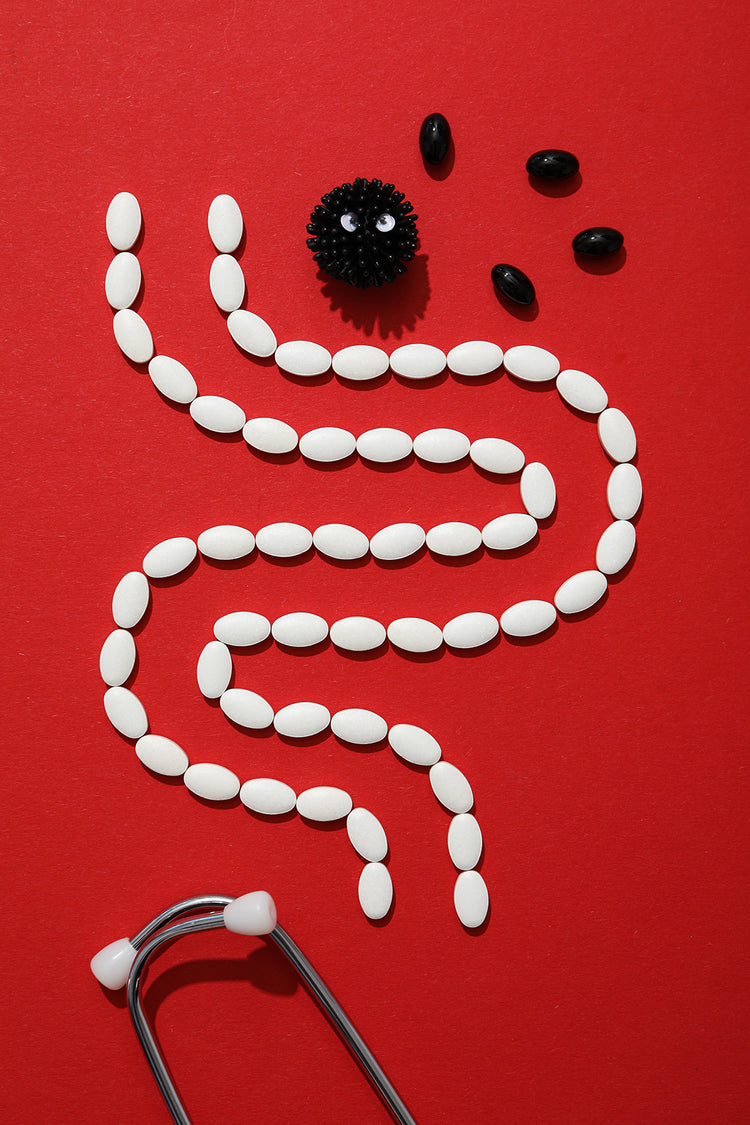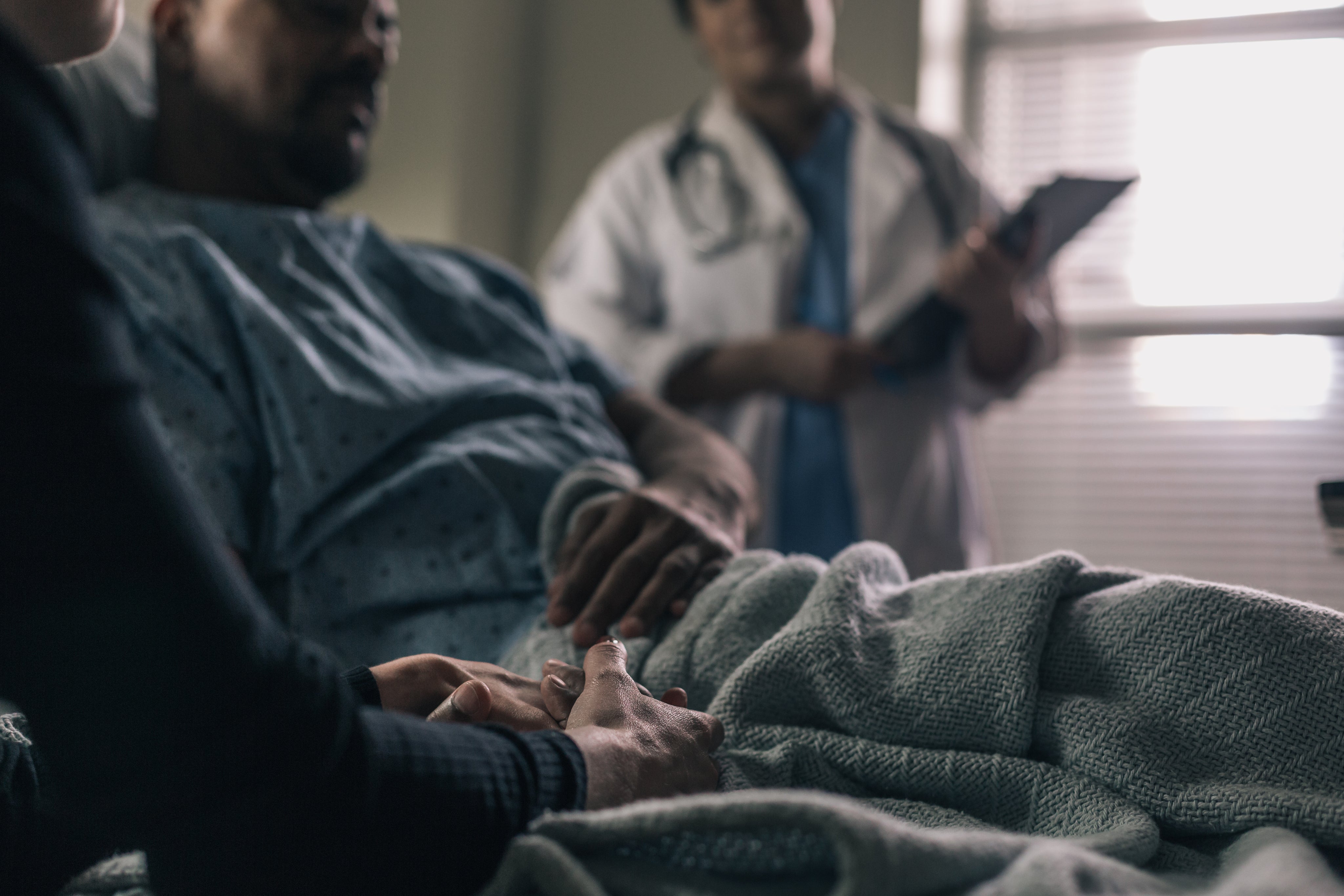
We all know it: Winter is approaching, temperatures drop suddenly, days become shorter, and the infection rate rises. Fever, runny nose, and sore throat accompany us all throughout the year from time to time, but most frequently in winter. We feel sluggish, tired, and drained.
Triggered by viruses, fungi, or bacteria, infectious diseases can be well treated with the appropriate medications, and annoying symptoms can be combated.
How you can quickly recognize and effectively treat an infectious disease is explained in this article.
What is an infectious disease?
An infectious disease is defined when an organism is infected by a pathogenic agent and subsequently shows symptoms. The pathogen – bacterium, virus, fungus, or parasite – enters the host's organism, multiplies, and spreads there.
Direct contact in the form of coughing or sneezing can lead to infection, but also indirect contact, such as shaking hands or consuming food. The duration and severity of an infectious disease depend on the type of infection, the characteristics of the pathogen, the physical condition of the host, and their immune response.
Infections can be locally confined (e.g., wound infections) or affect the entire organism (e.g., measles). However, an infection should not be equated with an infectious disease under any circumstances, as one only speaks of an infectious disease when the affected person also shows symptoms of illness.
This is not always the case with an infection. Thus, individuals carrying an infection can infect others without developing symptoms of illness themselves.
Common infectious diseases
Infectious diseases usually occur in clusters during epidemics, where many people in a certain area become infected at the same time. That's why you often feel that many people around you are getting sick at a certain time. You often hear similar statements, such as: "Everyone is getting sick again at the moment." or "The flu is going around again right now."
Certain infectious diseases are characteristic of different age groups, such as measles, rubella, or chickenpox for children. However, these infectious diseases can also be dangerous for older people with weakened immune systems.
To prevent infections, adherence to necessary hygiene measures or the intake of antibiotics is essential. In general, many infectious diseases in Germany, such as the flu or diarrheal diseases, are mild. However, the number of fatalities is also increasing here, as more and more people are resistant to drugs intended to combat these infections. The reason for this is, on the one hand, the improper use of antibiotics and, on the other hand, the inconsistent adherence to necessary hygiene measures.
Infectious diseases can be classified into eye infections, ear infections, respiratory infections, gastrointestinal infections, skin infections, and infections of the urinary and genital organs:
Eye infections
- Conjunctivitis
- Eyelid inflammations
- Styes
Gastrointestinal infections
- Campylobacter Enteritis
- Salmonellosis
- EHEC
- Norovirus Gastroenteritis
- Rotavirus Gastroenteritis
Infections of the urinary and genital organs
- Pyelonephritis
- Cystitis
- Urethritis
- Vaginal yeast infection
- Penile yeast infection
- various sexually transmitted diseases
Respiratory infections
- Flu (Influenza)
- Tonsillitis
- Whooping Cough
- Tuberculosis
Skin infections
- Chickenpox
- Wound infections
- Shingles
- Herpes
- Fungal infections (e.g., athlete's foot)
Ear infections
- Middle ear and ear canal infections
The RKI regularly records the most common infectious diseases of the year and identified the following infectious diseases for the year 2020:
- COVID-19
- Flu
- Gastrointestinal Infection
- Chickenpox

1. Viruses
Viruses are very small and do not consist of their own cells, but rather of one or more molecules containing genetic material (DNA or RNA). Viruses are surrounded by a protein shell. Generally, viruses are not considered living organisms because they do not have their own metabolism, nor do they have their own energy production or the ability for protein synthesis. Viruses can appear in many different forms.
Not all viruses cause illness. However, they can penetrate human, animal, and plant cells, where they dock onto host cells. If they fail to do so, they die.
Reproduction
After viruses have entered the organism, they begin to reproduce. To do this, they dock onto host cells and make them produce the building blocks they need. Once this is done, the host cells die, and thousands of new viruses are released, which in turn dock onto other host cells.
Treatment
Antibiotics are ineffective against viruses. However, there are some antiviral medications that are only effective against certain types of viruses. Once our immune system has successfully fought off the viruses for the first time, we are generally immune to them.
Possible Infectious Diseases
- Cold
- Cold Sores
- Gastrointestinal Infections
- HIV/AIDS
- Chickenpox
- Measles

2. Bacteria
Bacteria are significantly larger than viruses and appear in various forms. As single-celled organisms, they are capable of self-sustenance. They possess their own genetic material and have their own metabolism. They are found in the air, water, and food.
Not all bacteria cause illness. Many bacteria are even important for our bodies and naturally occur in our intestines, skin, and oral cavity. Only one percent of bacteria are pathogenic to the human organism. Once such a bacterium has entered the organism, it produces metabolic products that cause corresponding disease symptoms.
Reproduction
Bacteria reproduce through cell division.
Treatment
If you are suffering from an infectious disease caused by bacteria, you can easily treat it with the appropriate antibiotics.
Possible Infectious Diseases
- Salmonellosis
- Abscesses
- Sepsis
- Whooping Cough
- Urinary Tract Infections

3. Mushrooms
Mushrooms are very versatile. They appear as porcini mushrooms in the forest, as truffles underground, and naturally in the human body or on the skin as skin fungi. Only a few fungi, including some skin fungi, yeasts, and molds, actually cause illness. They love habitats that are very moist. For example, fungi like to spread in damp bathrooms, basements, or wet forest floors. However, the yeast fungus is part of the natural skin flora and lives in our skin flakes, where it feeds on dead tissue particles. Fungi only penetrate the human organism when the immune system is weakened.
Reproduction
Fungi can reproduce through simple division or by forming spores.
Treatment
Infectious diseases caused by fungi are called mycoses. There are specific antifungal agents, known as antimycotics, for their treatment.
Possible Infectious Diseases
- Mycoses on the skin, nails, and mucous membranes; internal organs are rarely affected

4. Parasites
Head lice, tapeworms, ticks, and fleas are well-known examples of so-called parasites, which are organisms that feed on the blood of their host. However, not all parasites cause illness. For example, lice only cause an unpleasant itch at the affected area and can be easily treated with chemical agents.
Tick bites, on the other hand, can pose a greater threat. This is because there is a possibility that pathogens can enter our bloodstream and cause inflammation of the brain or meninges.
Some fleas can also transmit plague bacteria, among other things.
However, Plasmodia are particularly dangerous. They can be transmitted by the bite of the Anopheles mosquito and trigger the infectious disease malaria.
You can become infected by parasites through the consumption of contaminated food, intensive contact with animals – pets are often used as an intermediate host by parasites to then infect the human organism – or through simple forest walks without appropriate clothing.
Reproduction
Parasites reproduce by laying eggs.
Treatment
You can protect yourself from parasites by wearing long, thick clothing in nature, washing your hands thoroughly and regularly, and if you own a pet, deworming it regularly and treating it with flea and tick medications.
Possible Infectious Diseases
- TBE (Tick-borne Encephalitis)
- Lyme Disease
- Toxoplasmosis (particularly dangerous for unborn children during pregnancy)

How dangerous are infectious diseases?
In Germany, most infectious diseases do not pose a serious threat to those affected, as medical care here is at a high level and the country has a diverse repertoire of effective medications. Infectious diseases can therefore be well treated, and dangerous courses of the disease can usually be avoided.
However, there are also some infectious diseases that pose a greater risk to humans than others. These include:
- Inflammation of the heart muscle (myocarditis)
- Inflammation of the brain (encephalitis)
- Inflammation of the meninges (meningitis)
- Blood poisoning (sepsis)
Already mentioned was the ever-increasing number of individuals resistant to antibiotics and other medications. Just as humans can develop resistance, bacteria can also become resistant to multiple antibiotics.One then speaks of multi-resistant germs.
A well-known example of this is nosocomial infections, so-called "hospital germs." These are infections that a person has contracted during their hospital stay. Generally, an infection is referred to as nosocomial if it occurs 48 hours after admission.
However, when looking at other countries around the world, it is noticeable that infectious diseases are still considered the most common cause of death worldwide. The reason for this fact lies in…
- … inadequate medical care
- … poor hygienic conditions
- … lack of nutrition
Additionally, the same pathogens do not occur everywhere in the world.In different climate zones, there are other pathogens that can cause infectious diseases that are significantly more dangerous than those known to us in Germany.
In general, the risk of an infectious disease depends on many different factors. As previously mentioned, children are, for example, significantly more susceptible to certain infectious diseases, such as measles or chickenpox, than people of an older age. Your own immune system, nutrition, physical fitness, and existing immune protection influence how dangerous an infectious disease is for you.
Other factors on which the risk of an infectious disease depends include:
- Pathogenicity and virulence of the pathogen (how harmful is the invader and how resilient is the pathogen?)
- Transmission and contagion (how easy is it to get infected with the pathogen?)
- Medical care (how well-developed is the medical care in the country? Are there effective medications against the respective pathogen?)
- Condition of the patient (how strong is the patient's immune system? Does the affected person have special immune protection, such as a vaccination? Is the affected person already suffering from underlying diseases?)
Infection pathways: How does one get infected?
You probably know this: Your entire circle of friends is sick, but not you. You have to take care of a sick child at home, yet you don't get infected. The next day, you're on the train and suddenly feel miserable in the evening.
You can get infected in many different ways. Not all germs are equally contagious, which means you can be in a large crowd for days and stay healthy, but suddenly get sick after a visit to a daycare.
There are basically six different routes of infection:
1. Droplet infection
In droplet infection, pathogens from the throat or respiratory tract are released into the air through saliva droplets by sneezing, coughing, or speaking. These are then either inhaled by other people and absorbed through the mucous membranes, or absorbed through direct contact, such as a kiss, via the mucous membranes.
The size of the saliva droplets is crucial for their range. Droplets with a diameter greater than 5 µm quickly settle in the air and are therefore only transmitted over a distance of one meter. In this case, maintaining sufficient distance is enough to protect against infection.
However, saliva droplets with a diameter smaller than 5 µm float in the air for a long time due to their low weight and can thus be transmitted over longer distances.
Viruses are often transmitted through droplet infection.Colds or the real flu are transmitted from person to person in this way. But bacterial infections, such as scarlet fever or meningococcal infections, are also spread through droplet infection.
2. Contact infection
Home testing is an innovative and practical method to keep track of one's health. With a wide range of tests, from vitamin and hormone levels to blood sugar and inflammatory markers , home testing offers a valuable way to check health values conveniently, discreetly, and reliably. Thanks to state-of-the-art technology and certified laboratories, you can trust the accuracy of these tests and use the results as a basis for your health care.
Whether for regular monitoring, for early detection, or as a basis for targeted prevention – home testing makes it possible to actively shape one's health and stay informed.
3. Food infection
Pathogens can also be ingested through food, as some pathogens, such as viruses and bacteria, can adhere to food. Other pathogens, such as salmonella, are also found directly in foods, such as raw eggs, raw sausages, and raw meat. To be on the safe side, such foods should always be thoroughly cooked before consumption.
However, germs in food are not easy to detect, as they cannot be seen, smelled, or tasted. Some bacteria that produce toxins are only recognized a few hours after consumption, manifesting as vomiting and diarrhea. In such cases, it is often referred to as food poisoning. The toxins affect the digestive tract of the affected person and usually lead to vomiting and diarrhea.
This symptom can be triggered by pathogens such as Salmonella, E.coli, Campylobacter, Listeria, noroviruses, and rotaviruses, as well as individual parasites.
4. Infection via water
Many people prefer still water from the tap over carbonated water. Unfortunately, you can also contract an infection from consuming drinking water. Bathing in contaminated waters and consuming untreated water can also lead to an infection.
Pathogens are found in particularly large quantities in swimming pools. They enter the water through feces and are transmitted via an oral-fecal infection. Pathogens are also present in the fine spray mist, usually found in water slides or in the form of waterfalls, which can be easily inhaled. These are mostly pathogens like Salmonella, Campylobacter, or EHEC.
Due to the high risk of infection, the Infection Protection Act and the Drinking Water Ordinance constantly monitor water quality during its treatment.
5. Infection through exchange of bodily fluids
Infections can also be transmitted from person to person through bodily fluids. This can occur through kissing, sexual intercourse, blood transfusions, or needlestick injuries.
6. Infection by animals
As previously mentioned, animals can also play a significant role in the spread of pathogens. In addition to parasites, animals can also infect humans through bites or stings.
Pathogens can enter the human body through many different entry points:
- Conjunctiva: Smear infections can be absorbed through the conjunctiva if the hand, on which pathogens adhere, is brought to the eye.
- Nasal mucosa
- Oral mucosa
- Bloodstream
- Lower respiratory tract: Saliva droplets can be absorbed from the air through the respiratory tract.
- Gastrointestinal tract: Foodborne infection can occur when toxins contained in food are ingested.
- Skin injuries/wounds
- Genital mucous membranes: If pathogens enter the genital mucous membranes, infections of the urinary and reproductive organs may occur.
The Human as Host
In some parts of this article, the term "host" has already been mentioned. Viruses seek a host to reproduce and spread. Parasites use their host as a source of food and a place to live. However, humans can also serve as a host in certain situations.
The host organism serves as a means of transport for the pathogen. It develops within the host, reproduces through it, and spreads. Pathogens are transmitted from host to host in an infection chain. Carriers of a pathogen do not necessarily have to fall ill. Often, they merely serve for transport and transmission and are then also called vectors.
Endogenous Infectious Diseases
The infectious diseases discussed so far are exogenous. Here, the pathogens originated from outside and only entered the organism of the affected person. However, endogenous infectious diseases are a special case.
Here, the pathogen originates from the individual's own organism. As mentioned in some previous sections, humans host many bacteria and fungi that are inherent to the body and naturally enrich it. However, if these pathogens reach a different location in the organism due to an accident, surgical intervention, or other influences, the body's own germ becomes a pathogen.
What symptoms do infectious diseases bring with them?
The symptoms of an infectious disease depend on the nature of the pathogen and the body structure it attacks. Depending on the type of infection, you can generally expect the following symptoms:
Eye infection
- Pain
- Swelling
- Redness
- Light sensitivity
- Discharge
- Corneal opacities
- Visual impairments
Ear infection
- stabbing, throbbing pain
- purulent ear discharge
- Fatigue
- Fever
- Hearing impairments
Respiratory infection
- Cough
- Sore throat
- Runny nose
- High fever
- Muscle, back, head, and limb pain
- Breathing difficulties
Gastrointestinal infection
- Nausea
- Abdominal pain
- Diarrhea
- Vomiting
Skin infection
- Redness
- Itching
- Swelling
- Blisters
- Lichen
- Boils
- Ulcers
- Pain
Infection of the urinary and genital organs
- burning pain during urination
- frequent urge to urinate
- intense urine odor
- dark/cloudy urine color
- traces of blood in urine
- small amount of urine
In addition to the symptoms typical of individual infectious diseases, there are general symptoms that can usually accompany any type of infection:
- Fatigue, exhaustion
- Lack of strength, rapid fatigue
- Chills, fever
- Head and limb pain
- Loss of appetite
- Malaise
How does an infectious disease progress?
What the course of an infectious disease looks like depends on the type of infection. Generally, a distinction is made between three types: florid infections, chronic infections, and latent infections. Each course of the disease is individual from person to person. However, the course can generally be divided into five different stages:
Common Infectious Diseases
1. Invasion Stage:
In the first stage of the disease progression, the pathogens enter the organism. Symptoms do not appear at this time.
2. Incubation Stage:
The second stage describes the period from the initial infection to the onset of the disease, i.e., until the first symptoms develop. In this stage, the pathogens multiply.
3. Acute Stage:
The acute stage represents the peak of the disease progression. All typical symptoms are evident here.
4. Convalescence Stage:
In the fourth stage, the immune system begins to fight against the pathogens. If successful, the symptoms decrease, and the organism recovers.
5. Convalescence Stage:
The affected person is fully recovered.
An active infection occurs when the immune system fails to quickly combat the pathogens. As a result, the symptoms can further develop, and the acute stage lasts longer.
If the immune system then manages to fight the pathogens in a renewed attempt, the convalescence stage follows, and the organism can slowly recover. However, if the immune system fails to do so and must repeatedly fight against the pathogens, it is a chronic infection.
In the case of a latent infection, the immune system manages to hold back the pathogens so that no symptoms develop. However, the pathogens are still present in the organism, so the infection can reappear at the next weakness of the immune system.
Successfully prevent infections
Now you are an expert when it comes to infectious diseases and their control. To protect yourself from infections, it is important to carefully maintain your health at all times. To successfully prevent infections, you need a strong immune system, should always follow hygiene measures, and ensure certain immune protection – for example, in the form of vaccinations.
To strengthen your defenses, you should …
To continue protecting yourself, you should also adhere to essential hygiene measures. These include:
- regular thorough handwashing
- observing cough and sneeze etiquette
- regular ventilation
- household hygiene
- hygiene when preparing food
- wearing appropriate "protective" clothing
- … eat a balanced and healthy diet
- … incorporate enough exercise into your daily routine
- … allow yourself enough sleep every night
- … ensure a healthy work-life balance
- … refrain from consuming alcohol and other drugs

Conclusion
Infectious diseases accompany us throughout our lives and occur more frequently during the colder seasons. They are caused by viruses, fungi, parasites, or bacteria and manifest through various symptoms. Fortunately, infectious diseases can be effectively treated with the appropriate medications. Additionally, people can take numerous preventive measures to prevent infections from occurring in the first place.









